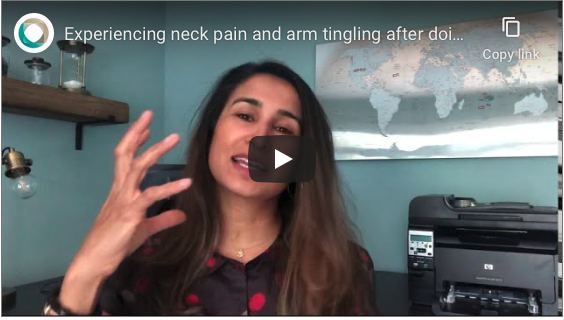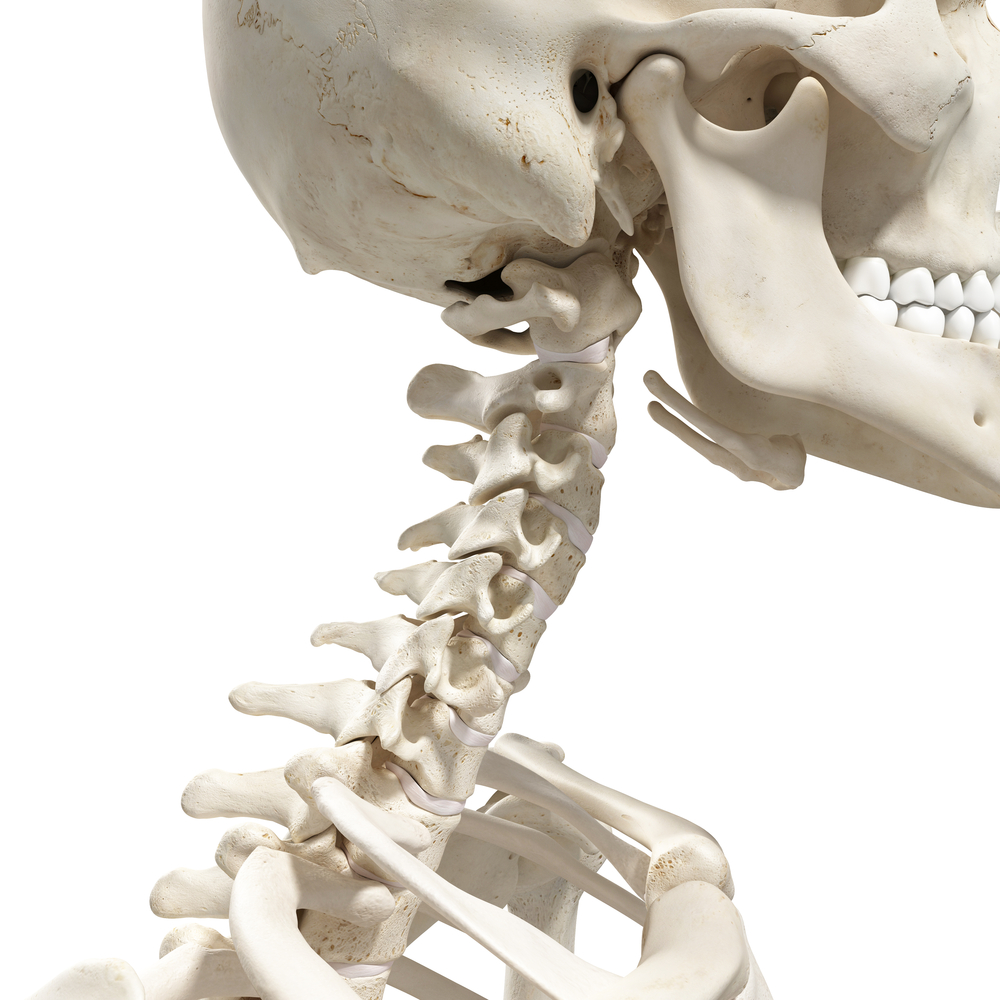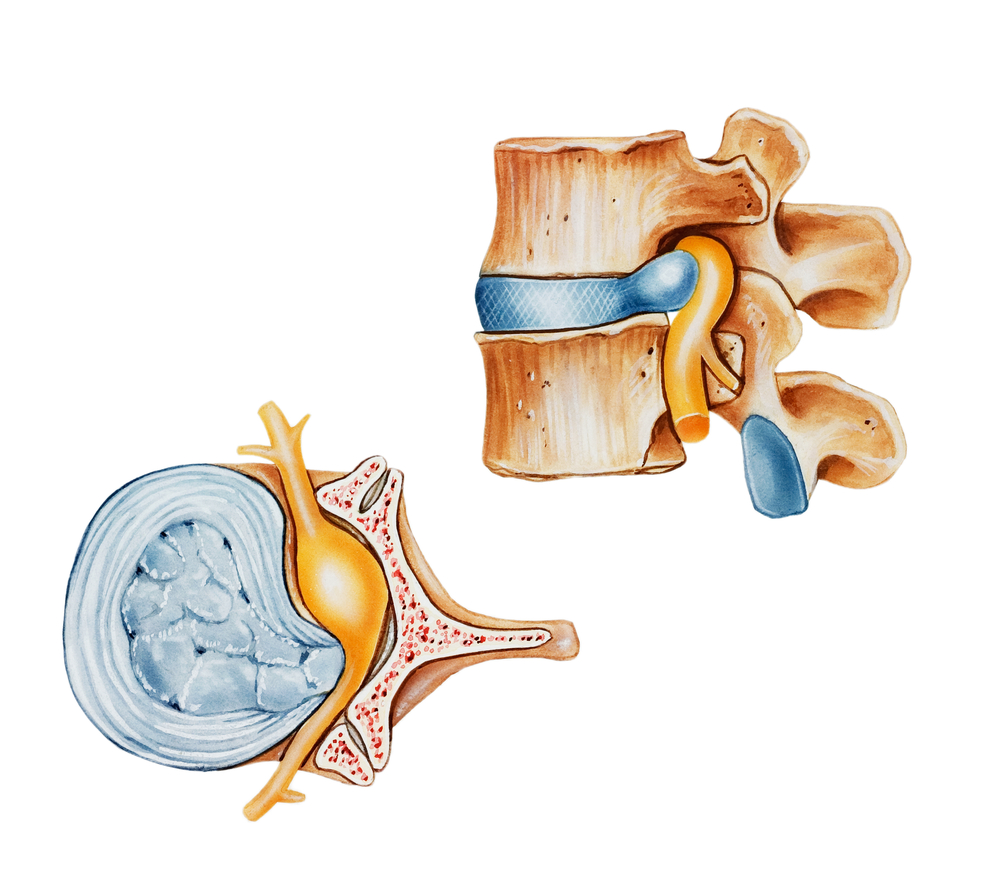
We’re all finding ways to stay active and workout at home with the recent increase in remote work and schooling. Fortunately, there is a wealth of at-home workout videos and programs to follow that fit into every schedule. However, here at Rebalance Physical Therapy, we’re seeing many people who have developed mysterious aches, neck pains, and experienced arm tingling after working out with at-home exercise videos.
Watch the full video here! Or, continue reading below.
Think about what movements you’re typically doing in at-home workouts: it’s mainly bodyweight exercises—because most of us do not have weights at home—and a lot more upper body work including planks, push-ups, and more complex exercises like burpees. These movements can put a lot more tension into the head and neck and may also cause arm tingling, numbness, and pain. You could also even feel sensations in your jaw and throughout your face.

Your neck is composed of many joints and seven vertebrae. The neck vertebrae sit on top of one another like Jenga blocks and their joints allow the vertebrae to slide a little bit. All of the neck vertebrae moving together allows for head and neck movement.

In between the stacked vertebrae are intervertebral discs, which can be thought of as “jelly donuts”. The discs create spaces between the vertebrae to allow for the nerves to enter and exit. The intervertebral disc or “donut” is comprised of a gelatinous center with a thick, outer layer. When the vertebrae and discs are stacked on top of one another in a healthy spine, the nerves can properly distribute, or innervate, throughout the whole body.

From this image, you can see that nerves travel from the neck, down the shoulder, through the arm, and to the hand. Nerves can cause something called “referred pain”, where the painful sensation is felt at a different area than the source. If you are experiencing shoulder blade pain or spasming, it could be a deep knotted muscle, but, more likely, it could be an effect from the nerves in the neck.
A healthy intervertebral disc, or “donut”, should be round and sealed. If too much stress is put on the vertebrae due to postural imbalances, tightness, or poor shoulder functioning among other things, the outside of the disc becomes weakened. In a weakened disc, the center “jelly”, can leak out and put pressure on the nerves. This nerve pressure, in turn, causes pain and sensations down the length of the nerve. Intervertebral discs can also be affected by arthritic changes—where the vertebrae are broken down through wear and tear—and can become flattened, which squishes the nerve and causes pain.
You do not want to continue to work out and make things worse. Your pain, tingling, numbness, and spasming could be for a variety of reasons ranging from postural imbalances, improper form, and muscle tightness to more serious issues with your shoulder, head, or neck joints. If you are experiencing any of these symptoms after starting at-home workouts, you should see a qualified physical therapist like the clinicians at Rebalance Physical Therapy. We have been treating neck pain and injuries for decades with very successful outcomes. Physical therapy can help address your symptoms through lots of hands-on work to soften musculature and get your head, neck, and shoulder joints working properly. Physical therapists also watch your exercise form to help you strengthen in a safe and healthy way. If you do not live around Philadelphia, but are in Pennsylvania, we offer telehealth evaluations and visits. If you are not located in Pennsylvania, Rebalance can perform Case Management Consults to help you determine the next steps and refer you to appropriate physicians or physical therapists in your area. It’s important to get a complete picture of what’s going on as soon as possible to address your pain and continue to stay active.
In-Person and Online Consultations


